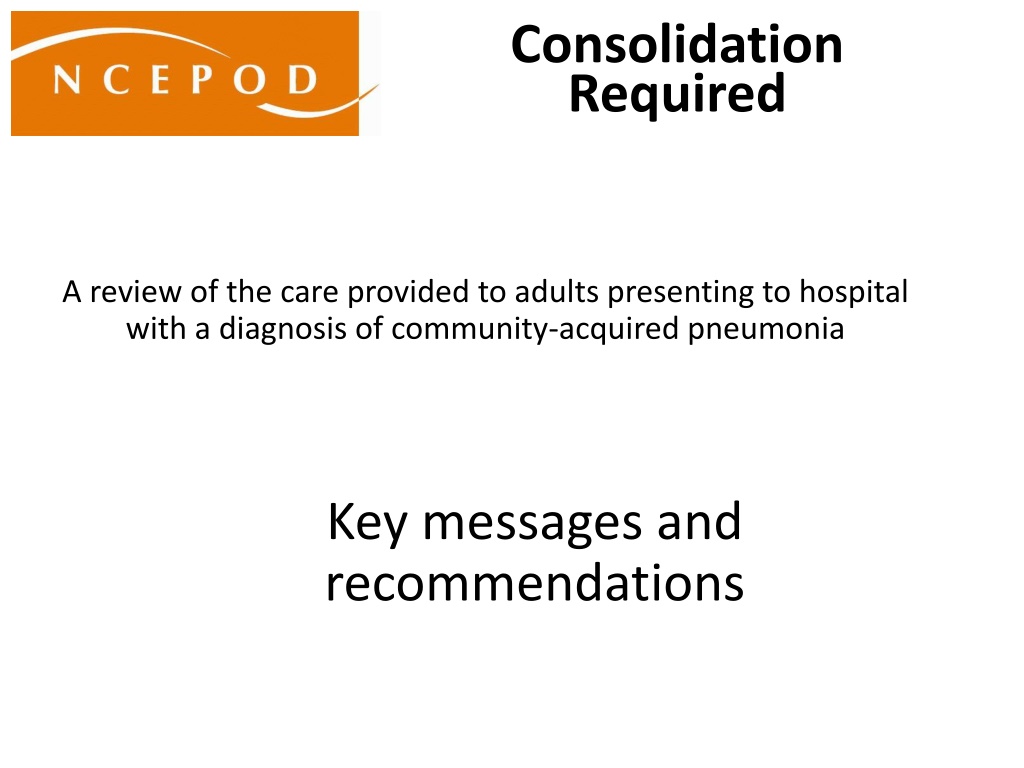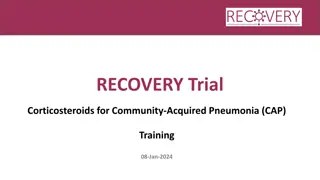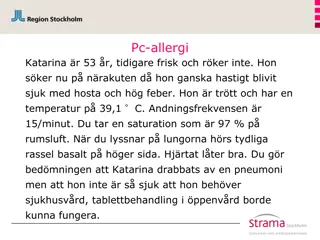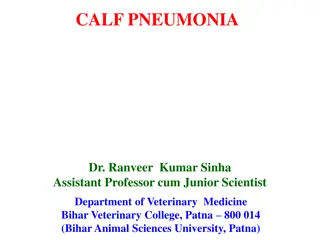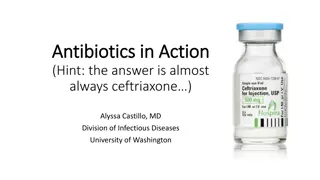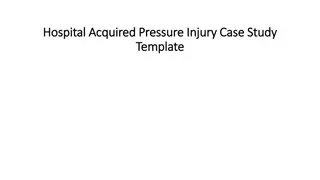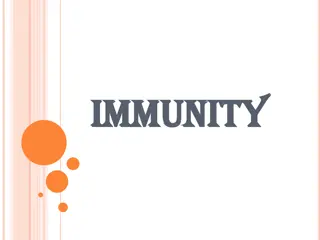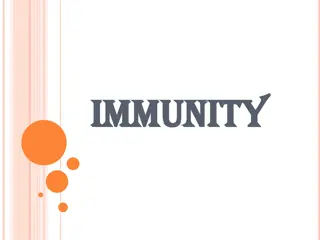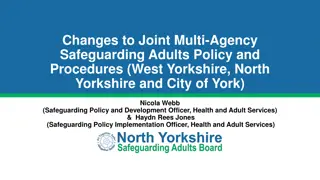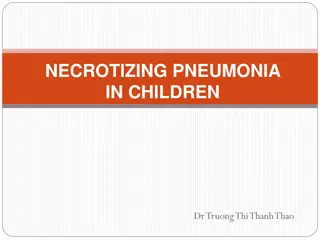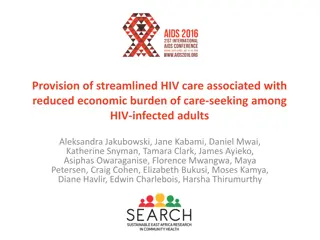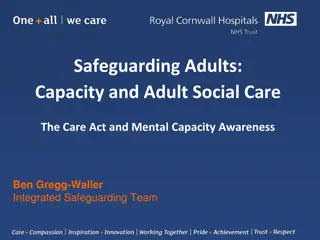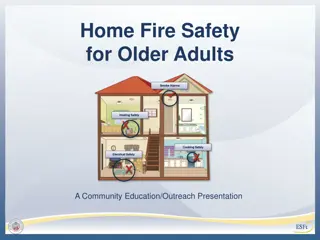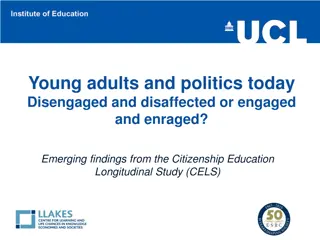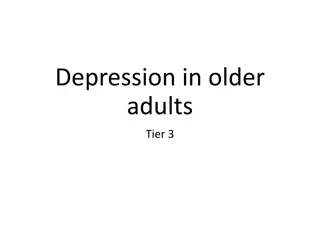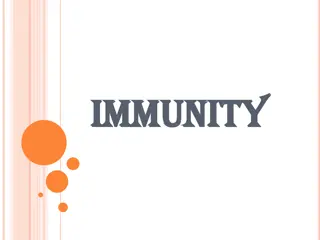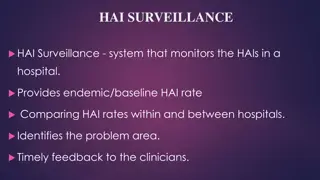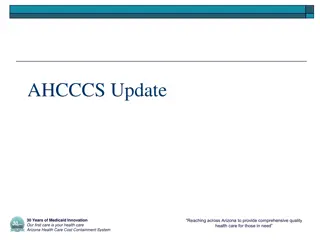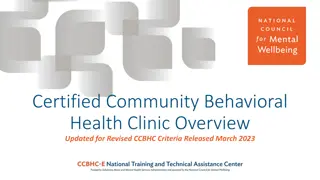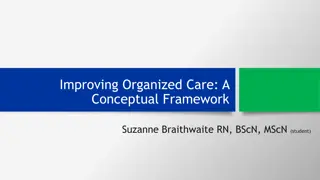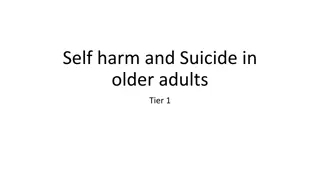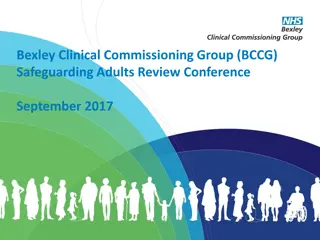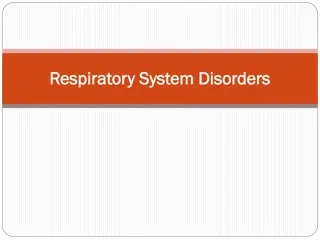Review of Care for Adults with Community-Acquired Pneumonia
This review focuses on the care provided to adults diagnosed with community-acquired pneumonia (CAP) in hospitals. Key findings include the importance of accurate diagnosis, clinical decision making, and antibiotic management. The study assessed the quality of care through various questionnaires and a sample of patients. Recommendations highlight the need for rapid and thorough investigation for accurate diagnosis and appropriate treatment initiation.
Download Presentation

Please find below an Image/Link to download the presentation.
The content on the website is provided AS IS for your information and personal use only. It may not be sold, licensed, or shared on other websites without obtaining consent from the author. Download presentation by click this link. If you encounter any issues during the download, it is possible that the publisher has removed the file from their server.
E N D
Presentation Transcript
Consolidation Required A review of the care provided to adults presenting to hospital with a diagnosis of community-acquired pneumonia Key messages and recommendations
The study To identify remediable factors in the quality of care provided to patients aged 18 and over with a diagnosis of community acquired pneumonia. Organisational questionnaire Clinician questionnaire Case note review Patient online survey
Study population Inclusion criteria All patients aged 18 or over who presented to hospital between 1st October 2021 and 31st December 2021 with a primary admission diagnosis of CAP. Exclusion criteria Patients presenting to hospital within 10 days of being discharged from hospital where the discharge diagnosis of the previous admission was not CAP. Sampling A maximum of eight patients were selected from each hospital. Sampling was deliberately biased towards more severe cases of CAP, based on increased length of stay, admission to critical care and death, to ensure the inpatient pathway could be assessed. A sample of ambulatory/same day discharges were also included while minimising sampling patients with a length of stay of less than three days.
Study sample Figure 1. shows the number of patients included in the study and the data returns.
Overall assessment of care Figure 2. Overall quality of care Reviewer assessment form data
Key messages (1) Accurate diagnosis of community acquired pneumonia The typical features associated with acute respiratory illness such as CAP include cough, dyspnoea, wheeze, pleuritic pain, haemoptysis, and fever. However, a significant proportion of CAP patient s present with atypical features. The absence of typical features of CAP (or infection in general) emphasises the importance of rapid and thorough investigation on admission to hospital to ensure an accurate diagnosis and initiation of appropriate treatment.
Key messages (2) Clinical decision making Assessment of the severity of community-acquired pneumonia (CAP) influences the location where treatment is provided, the number and type of investigations required and the initial choice of antibiotics.
Key messages (3) Antibiotic management Antibiotics are the standard treatment for most patients with community-acquired pneumonia (CAP). Prescribing should follow local guidelines which consider the likely pathogens and resistance profiles. NICE guidelines have set out an antimicrobial prescribing strategy for CAP. These aim to optimise antibiotic use and to reduce antibiotic resistance, and the UK Health Security Agency describes best practice for antibiotic stewardship for English hospitals in the Start Smart, then Focus toolkit. Guidelines are also in place to promote systems and processes that deliver effective antimicrobial use.
Key messages (4) Follow up arrangements Guidance recommends that all patients who have been admitted with CAP should have a clinical follow-up at six-weeks either with their GP or in a hospital clinic. All patients admitted to hospital should have access to follow-up in primary care or a hospital outpatient clinic when needed. Guidelines recommend targeting chest X-ray (CXR) follow-up after about 6 weeks for patients who have persistence of symptoms or physical signs or who are at higher risk of underlying malignancy (specifically patients who smoke and those aged >50 years)
Key messages (5) Service organisation To deliver the improvements highlighted in this report and support the best outcomes for patients with CAP, it is important to have identified leadership for pneumonia care in hospitals. In addition, audit of practice has the potential to identify future areas for improvement to local leadership and service organisation.
Recommendation 1 Consider community-acquired pneumonia as a possible diagnosis when patients present with new onset confusion without a clear cause, even in the absence of typical symptoms, such as a cough, fever, and breathlessness. This is particularly important for older patients and those who are frail. Primary target audience: All healthcare professionals who review patients with pneumonia Supported by: Clinical directors in emergency medicine, respiratory medicine, medicine for the care of older people, general medicine, and nursing leads
Recommendation 2 Undertake a chest X-ray in patients with suspected community- acquired pneumonia: Within four-hours of arrival at hospital* Provide a formal report within 12 hours of the X-ray.** *This supports NICE QS110 Quality Statement 3 ** This supports Diagnostic Imaging Reporting Turnaround Times Primary target audience: All healthcare professionals who review patients with pneumonia, and radiologists Supported by: Clinical directors for gastroenterology and clinical directors for colorectal/ gastrointestinal surgery
Recommendation 3 Use clinical support tools such as CURB65* and NEWS2, in combination with clinical judgement to determine: The most appropriate pathway of care for patients with community-acquired pneumonia ambulatory or inpatient Which investigations are needed Antibiotics to use as initial treatment Treatment escalation decisions Primary target audience: All healthcare professionals who review patients with pneumonia, and radiologists Supported by: Clinical directors for gastroenterology and clinical directors for colorectal/ gastrointestinal surgery
Recommendation 4 Use the results of essential investigations (e.g. chest X-ray or blood results) to review the provisional diagnosis and severity of community-acquired pneumonia for patients admitted to hospital who have started treatment to change/adjust antibiotics as necessary. N.B. A tool such as Start Smart then Focus for antimicrobial stewardship may help Primary target audience: All healthcare professionals who review patients with pneumonia Supported by: Clinical directors in emergency medicine, respiratory medicine, medicine for the care of older people, general medicine, and nursing leads
Recommendation 5 Arrange microbiological investigations according to the level of community-acquired pneumonia severity. This support NICE CG191 and British Thoracic Society guidelines for the management of community acquired pneumonia (2009) Primary target audience: All healthcare professionals who review patients with pneumonia Supported by: Clinical directors in emergency medicine, respiratory medicine, medicine for the care of older people, general medicine, microbiology, and nursing leads
Recommendation 6 Prescribe antibiotics for pneumonia according to the level of clinical severity, using the narrowest spectrum of activity, and follow your hospital antibiotic guidelines. Review the antibiotic to ensure it is the most appropriate and is the best mode of delivery. N.B. A tool such as Start Smart then Focus for antimicrobial stewardship may help Primary target audience: All healthcare professionals who review patients with pneumonia Supported by: Clinical directors in emergency medicine, respiratory medicine, medicine for the care of older people, general medicine, pharmacy, and nursing leads
Recommendation 7 Ensure a treatment escalation plan is in place following diagnosis of community-acquired pneumonia. This should be agreed in discussion with the patient and their family, considering a combination of factors such as age, frailty, and comorbidities. This support NICE CG191 and British Thoracic Society guidelines for the management of community acquired pneumonia (2009) Primary target audience: All healthcare professionals who review patients with pneumonia Supported by: Clinical directors in respiratory medicine, medicine for the care of older people, general medicine, and nursing leads
Recommendation 8 Record smoking status in patients admitted with community-acquired pneumonia. Offer brief advice, nicotine replacement therapy, and referral to a tobacco dependency specialist to support the group of patients who smoke, while they are in hospital and, after discharge.* *This supports NICE Guideline 209 1.14.13 Primary target audience: All healthcare professionals who review patients with pneumonia Supported by: Clinical directors in respiratory medicine, medicine for the care of older people, general medicine, and nursing leads
Recommendation 9 Use admission to hospital with community-acquired pneumonia as an opportunity to address a patient s general health and wellbeing.* *This supports NICE Guideline 16 and Making Every Contact Count Primary target audience: All healthcare professionals who review patients with pneumonia Supported by: Clinical directors in respiratory medicine, medicine for the care of older people, general medicine, and nursing leads
Recommendation 10 At discharge from hospital after an episode of community-acquired pneumonia: Provide patients with written information about pneumonia Provide patients with a clear plan for clinical follow-up. Arrange a chest X-ray at six-weeks for patients who smoke, those over 50 years of age or where symptoms persist.* If the chest X-ray is not undertaken document the reason why. *This supports the British Thoracic Society guidelines for the management of community acquired pneumonia (2009) Primary target audience: All healthcare professionals who review patients with pneumonia Supported by: Clinical directors in respiratory medicine, radiology, medicine for the care of older people, general medicine, and nursing leads
Recommendation 11 Review the infrastructure for, and leadership of, hospital pneumonia services. Aim for one specialist pneumonia nurse per 400 admissions and a clinical lead with responsibility for the pneumonia service.* *This supports the GIRFT (Getting it Right First Time) respiratory report (published March 2021) Primary target audience: Chief medical and nursing officers, clinical directors in respiratory medicine, respiratory nursing and, radiology
Recommendation 12 Differentiate community-acquired pneumonia from hospital-acquired pneumonia by including the ICD-10 code for nosocomial infections (Y95) in addition to the pneumonia code for hospital-acquired pneumonia. Primary target audience: Clinical coders in hospitals
Consolidation Required Consolidation Required Full report, summary and implementation tools can be found at www.ncepod.org.uk/2023cap.html
